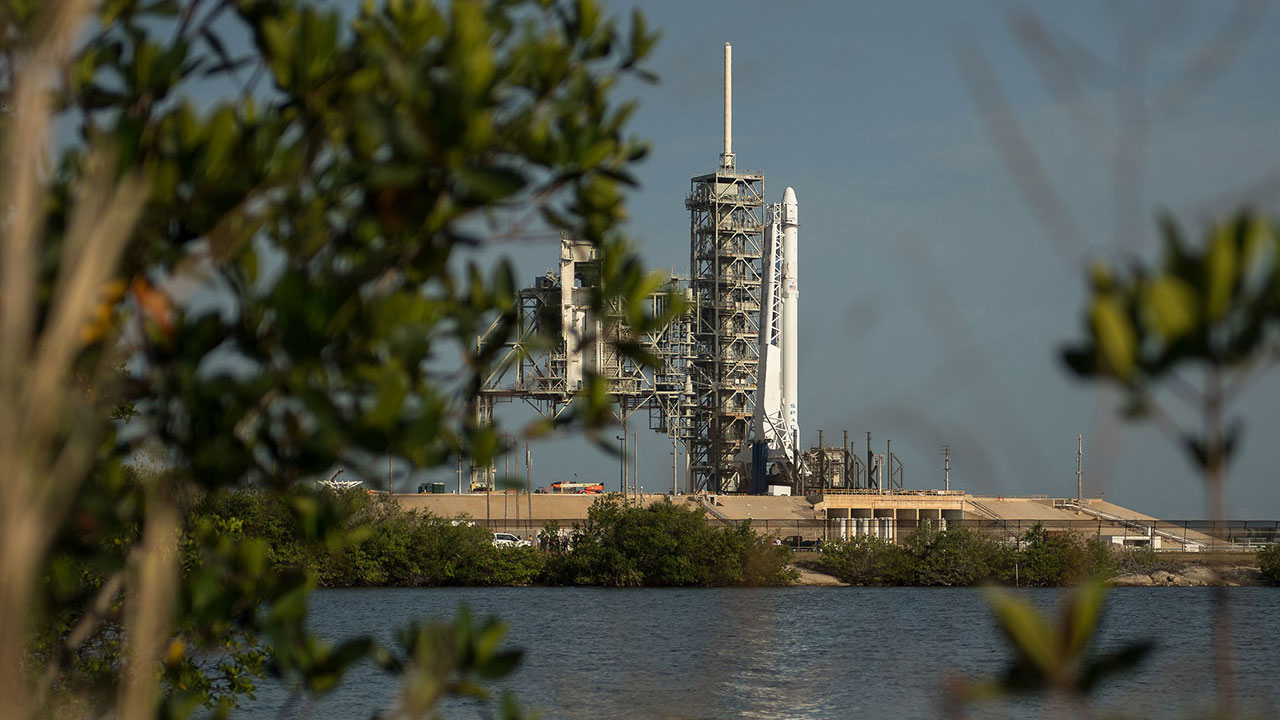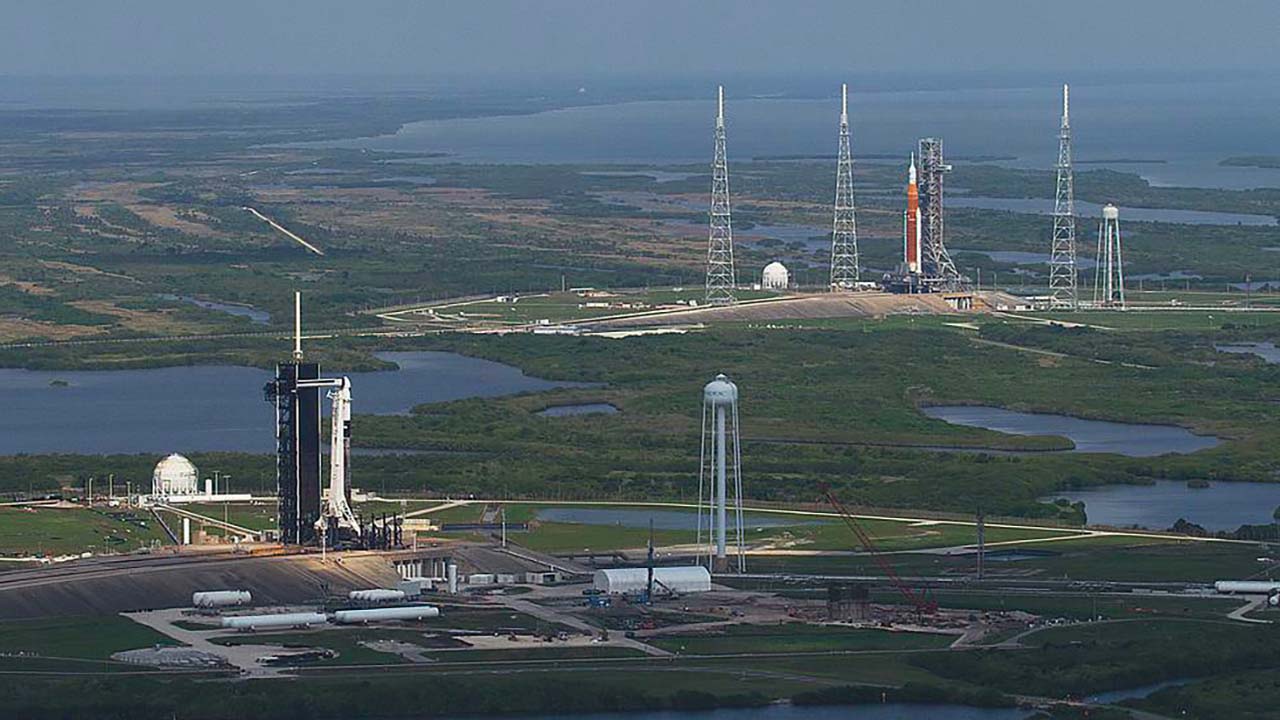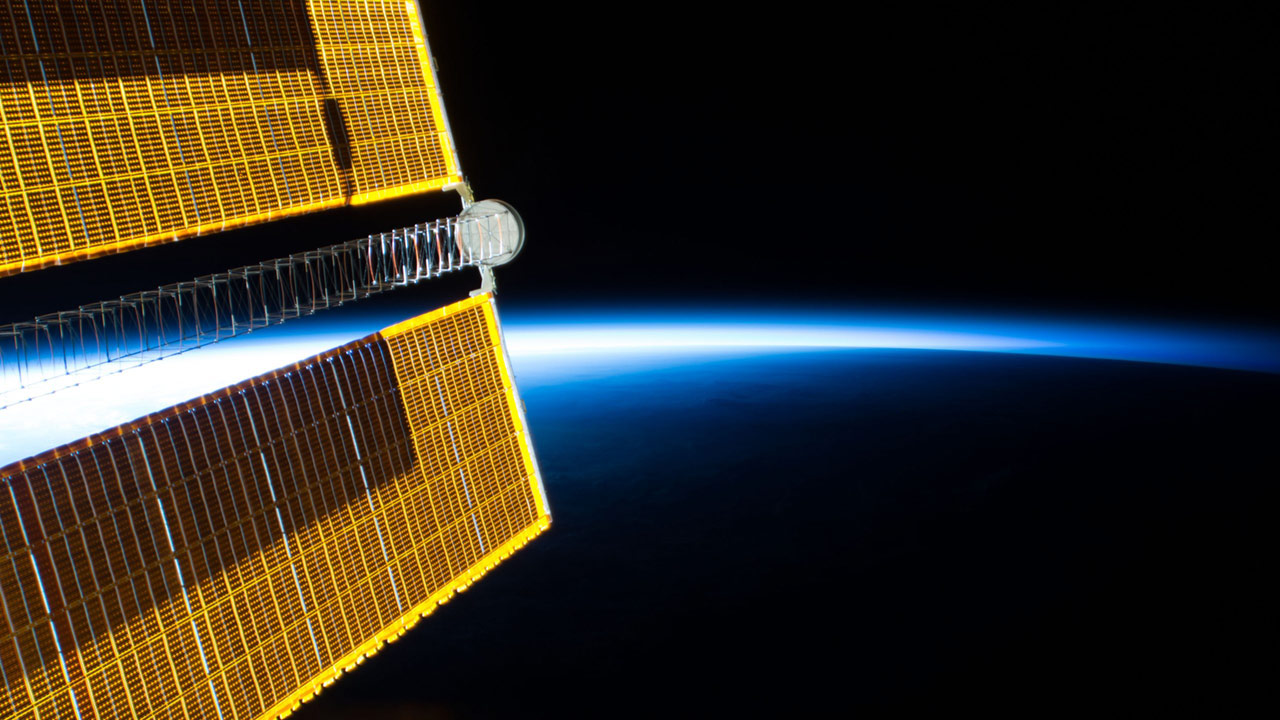SpaceX’s 25th Commercial Resupply Services (CRS) mission to the International Space Station (ISS) is slated for launch no earlier than July 14 at 8:44 p.m. ET from Kennedy Space Center in Florida. The ISS National Laboratory is sponsoring more than 15 payloads on this mission that will bring value to our nation and drive a sustainable market in low Earth orbit.
Below are highlights of ISS National Lab-sponsored research investigations that are part of the SpaceX CRS-25 mission to the space station.
Active Deployment of First Aerospace Electronic Textile
Massachusetts Institute of Technology
Principal Investigator (PI): Joe Paradiso
This project will use the MISSE Flight Facility to test the functional performance and resiliency of a fabric that simultaneously senses and protects in the harsh environment of space. The research team developed piezoelectric fibers that act as sensors and can be stitched into conventional textiles. These fibers send an electrical signal in response to mechanical stress such as bending or the impact of orbital debris. Networks of these fiber sensors could be integrated into spacesuits or the exterior of structural spacecraft and satellites to provide hazard warnings of debris impact counts and frequency.
Implementation Partner: Aegis Aerospace
Characterizing the Effects of Microgravity on Wound Healing
Center for Military Psychiatry and Neuroscience
PI: Rasha Hammamieh
This project aims to investigate the effects of microgravity on skin wound healing in a rodent model. The research team will document the wound healing process and the quality of regenerated skin tissue, identifying genes, gene networks, and cell functions associated with skin wound healing that differ between microgravity and terrestrial environments. Some of the mice will be returned alive to observe wound healing and determine the amount of time required after return from spaceflight for recovery of normal skin wound healing. Results may identify molecular mechanisms affected by microgravity that play a role in skin wound healing, leading to the development of improved wound treatments on Earth.
Implementation Partner: Leidos Corporation
Development of a Brain Organoid Model for Commercial Applications
University of California, San Diego
PI: Erik Viirre
This project seeks to establish a brain organoid (miniaturized and simplified organ) model for use on the ISS for biomedical discovery and personalized medicine applications. Developed from stem cells, the brain organoids will be gene-edited and used to study neurological diseases in microgravity. These organoid models could aid in the study of diseases that represent a significant health burden, such as autism and Alzheimer’s disease.
Implementation Partner: Space Tango
Electrical Stimulation of Human Myocytes in Microgravity
University of Florida
PI: Siobhan Malany
This project seeks to develop a tissue chip system to culture and electrically stimulate human primary skeletal muscle cells from young and older adults in microgravity. Electrical stimulation causes muscle microtissues to contract, allowing the team to monitor muscle contraction rates. Physiological changes resulting in loss of muscle mass and strength occur about 10 times faster in microgravity than on Earth. The team’s tissue chip platform will serve as an advanced human cell culture system to study microgravity-induced physiological changes that mimic age-related muscle loss and to test therapeutics to treat muscle wasting. This project builds on an ISS National Lab-sponsored investigation to validate use of a lab-on-a-chip system to culture human skeletal muscle cells in microgravity. This project is funded by the National Center for Advancing Translational Sciences, a center within the National Institutes of Health.
Implementation Partner: Space Tango
Genes in Space-9
Boeing and miniPCR bio
PI: Scott Copeland
This student experiment through the Genes in Space™ program will test a method that could be used to analyze water quality in orbit. If successful, this method could be used to develop a biosensor that would look for pathogens in water samples. Such a sensor would streamline water quality testing, providing a valuable tool for both space travelers and people in remote or low-resource communities on Earth who do not have access to sophisticated equipment. Genes in Space™ is an annual research competition that challenges students in grades seven through 12 to design DNA experiments to be conducted via the ISS National Laboratory.
Implementation Partner: miniPCR bio
Interfacial Bioprocessing of Pharmaceuticals Via Ring-Sheared Drop Module
Arizona State University
PI: Juan Lopez
This project seeks to develop and test predictive models for understanding and controlling the fluid forces that cause protein aggregation (clustering) during drug development. The research team will spin a one-inch-diameter droplet of protein solution in a motorized module and observe droplet formation as it experiences shear (force of two fluids sliding past each other). Protein aggregation can be a significant limiting factor in pharmaceutical manufacturing, affecting the quality and yield of active pharmaceutical ingredients. The ability to better predict how shear affects proteins could help researchers better mitigate undesirable effects during pharmaceutical manufacturing. This investigation is funded by the U.S. National Science Foundation.
Implementation Partner: Teledyne Brown Engineering, Inc.
Microgravity Model Immunological Senescence on Tissue Stem Cells
University of California, San Francisco
Sonja Schrepfer
This tissue chip project aims to investigate the relationship between immune aging and healing outcomes. Aging is associated with dysregulation of the immune response (termed immunosenescence), a condition that may also be accelerated by prolonged exposure to microgravity. The project will investigate the biology of aging from two perspectives—one during observations of immune function in microgravity and then during recovery of the cells after return to a 1g environment. Results could help researchers gain a better understanding of immune system dysregulation and could help lead to the development of new treatments for elderly and immunocompromised patients. This project is funded by the Center for Advancing Translational Sciences, a center within the National Institutes of Health.
Implementation Partner: BioServe Space Technologies
Spectral Characterization of Novel Spacecraft Materials at Low Earth Orbit Environment
Georgia Institute of Technology
PI: Elena Pils
This project will use the MISSE Flight Facility to evaluate changes in the optical properties of conventional and novel spacecraft materials as they are exposed to the extreme conditions of space. The research team will correlate this optical property data with material chemistry and expected lifetime data to produce a database that will be valuable both in remotely diagnosing the material health of spacecraft and in improving ground-based space environment simulation for materials testing.
Implementation Partner: Aegis Aerospace
Structure and Stability of Foams and Emulsions
City College of New York
PI: Jing Fan
This project aims to validate a physical phenomenon predicted by models but never observed: optimal packing structure of dry foams. The project will also study whether it is possible to use eco-friendly nanoparticles instead of surfactants to stabilize foams and emulsions. Microgravity is beneficial because the bubbles and drops that form dry foams can assemble without being confined in a container, enabling the foams and emulsions to be preserved and observed over several hours. Results could lead to improvements in everyday products such as salad dressings, body wash, cosmetic creams, fire extinguishers, and more. This project is funded by the U.S. National Science Foundation.
Implementation Partner: Leidos Innovations Corporation
Study of Induced Pluripotent Stem Cells in Microgravity
Cedars-Sinai Medical Center
PI: Clive Svendsen
Cedars-Sinai, in partnership with Space Tango, will explore the effect of microgravity on induced pluripotent stem cells (iPSCs) cells and the neural progenitor cells they generate. Human iPSCs are ideal for creating and testing potential treatments that can be tailored to an individual. Microgravity may overcome some of the problems involved in the processes by which stem cells divide and become different types of cells, which could advance the manufacturing of iPSCs for the treatment of various diseases on Earth.
Implementation Partner: Space Tango
Tide in Space
Procter & Gamble
PI: Mark Sivik
This investigation seeks to aid in the development of low-resource-use laundry solutions for everyday use while also meeting consumer demands for more sustainable products. This project will expand on an initial experiment onboard the orbiting laboratory utilizing Tide Infinity for stability testing. This project will further evaluate key ingredients found in Tide To Go Pens and Tide To Go Wipes, allowing the company to examine the viability of cleaning detergent solutions in space.
Implementation Partner: SEOPS, Inc.






